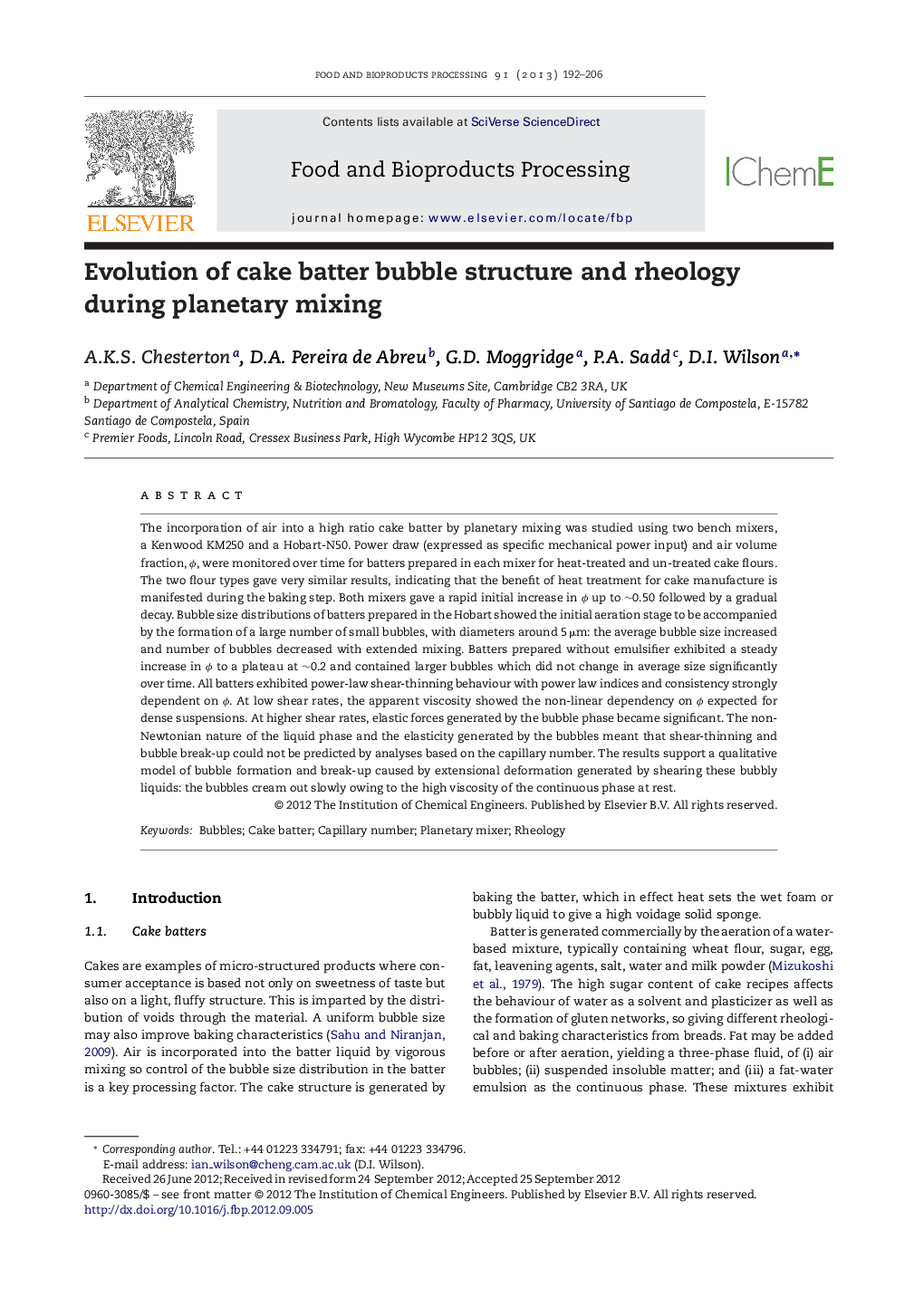| Article ID | Journal | Published Year | Pages | File Type |
|---|---|---|---|---|
| 19241 | Food and Bioproducts Processing | 2013 | 15 Pages |
The incorporation of air into a high ratio cake batter by planetary mixing was studied using two bench mixers, a Kenwood KM250 and a Hobart-N50. Power draw (expressed as specific mechanical power input) and air volume fraction, ϕ, were monitored over time for batters prepared in each mixer for heat-treated and un-treated cake flours. The two flour types gave very similar results, indicating that the benefit of heat treatment for cake manufacture is manifested during the baking step. Both mixers gave a rapid initial increase in ϕ up to ∼0.50 followed by a gradual decay. Bubble size distributions of batters prepared in the Hobart showed the initial aeration stage to be accompanied by the formation of a large number of small bubbles, with diameters around 5 μm: the average bubble size increased and number of bubbles decreased with extended mixing. Batters prepared without emulsifier exhibited a steady increase in ϕ to a plateau at ∼0.2 and contained larger bubbles which did not change in average size significantly over time. All batters exhibited power-law shear-thinning behaviour with power law indices and consistency strongly dependent on ϕ. At low shear rates, the apparent viscosity showed the non-linear dependency on ϕ expected for dense suspensions. At higher shear rates, elastic forces generated by the bubble phase became significant. The non-Newtonian nature of the liquid phase and the elasticity generated by the bubbles meant that shear-thinning and bubble break-up could not be predicted by analyses based on the capillary number. The results support a qualitative model of bubble formation and break-up caused by extensional deformation generated by shearing these bubbly liquids: the bubbles cream out slowly owing to the high viscosity of the continuous phase at rest.
► The amount of air and bubble size distributions entrained in mixing were measured. ► Batters prepared without emulsifier entrained less air and gave larger bubbles. ► At low shear rates these bubbly liquids behaved like suspensions. ► Large normal force differences are generated at high shear rates, breaking bubbles. ► The non-Newtonian liquid phase gives rise to complex rheological behaviour.
